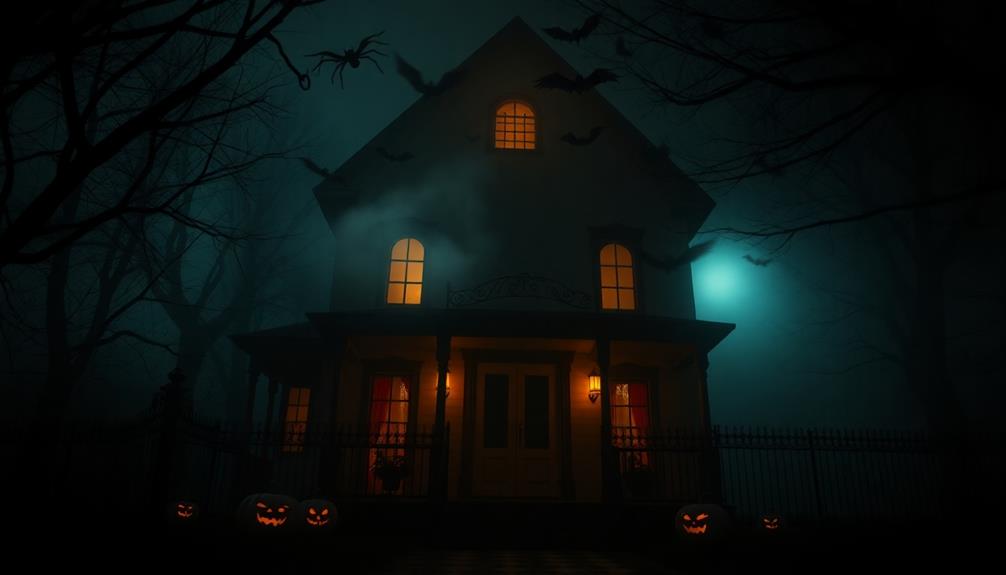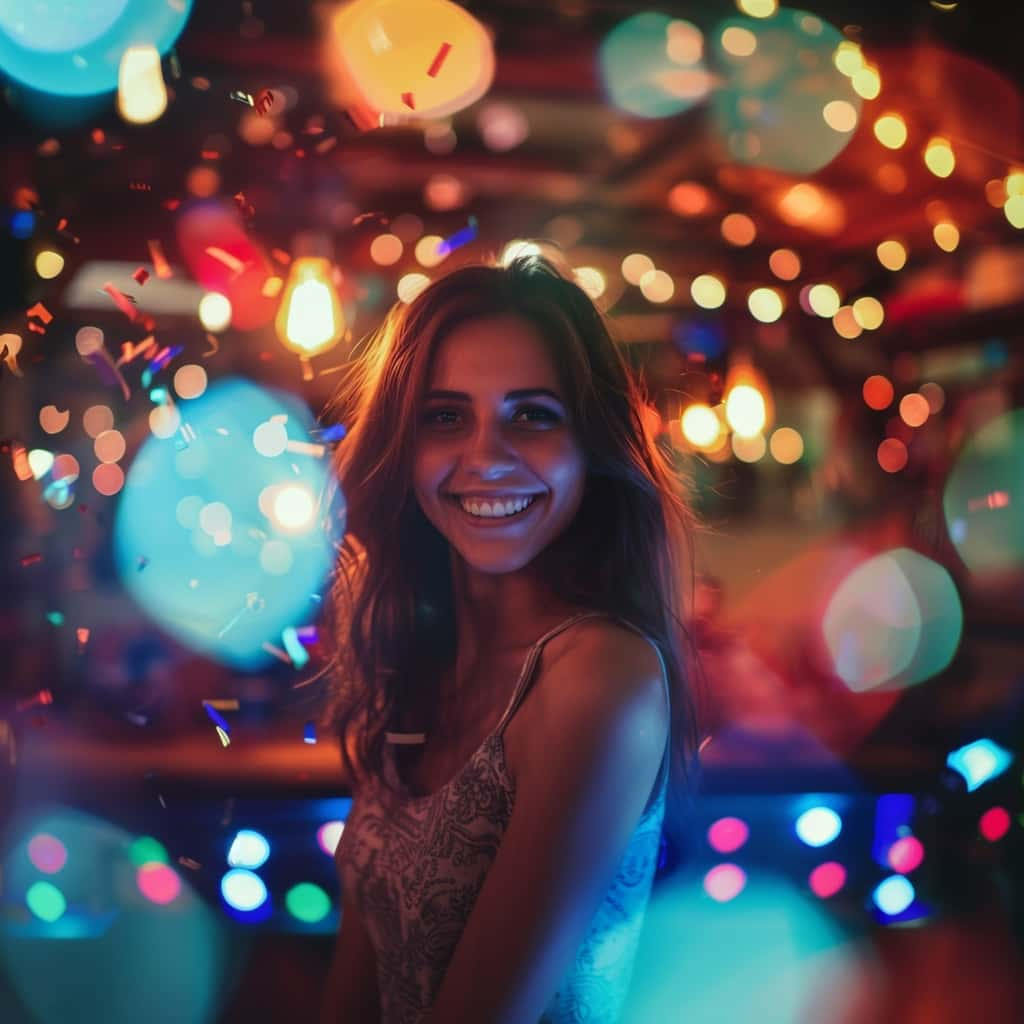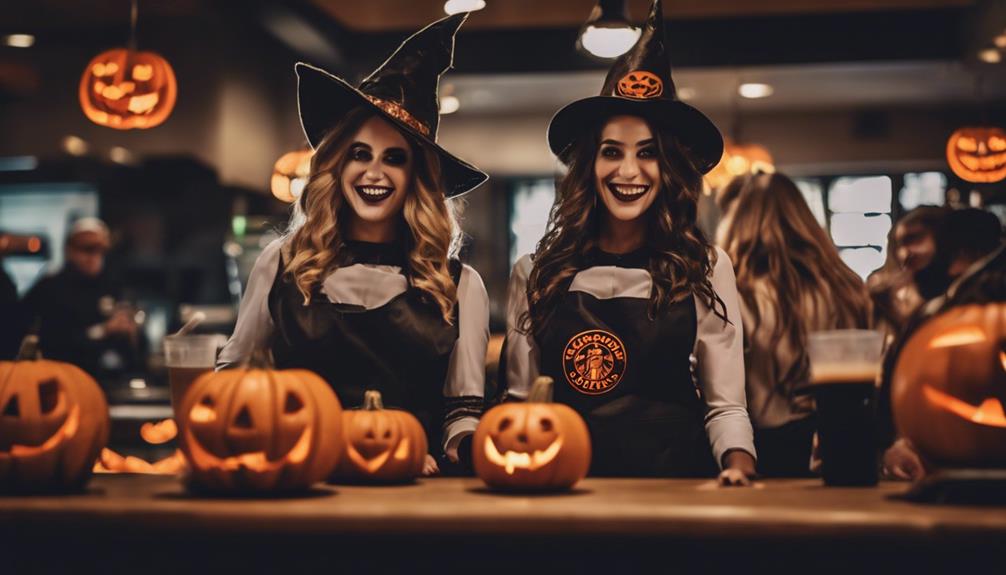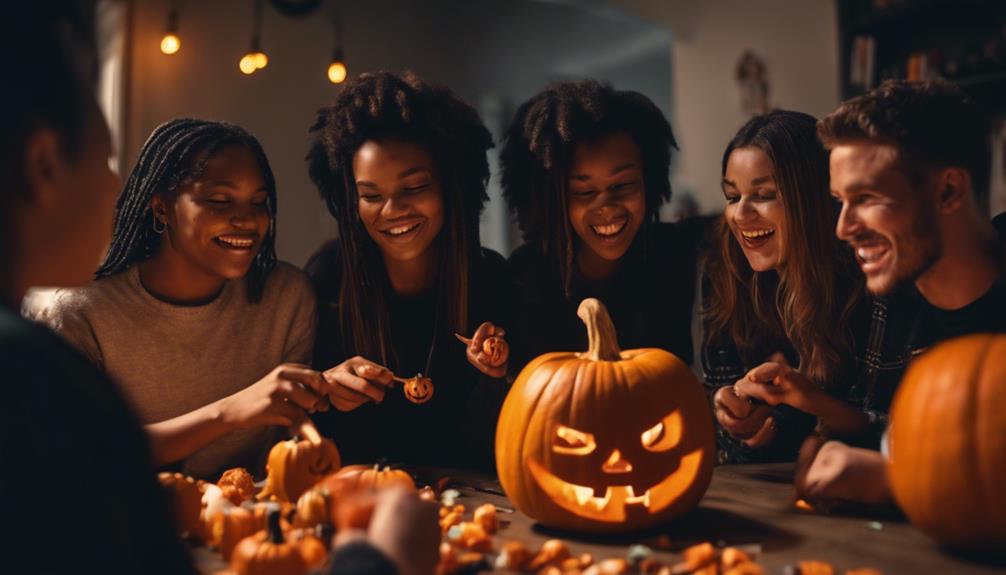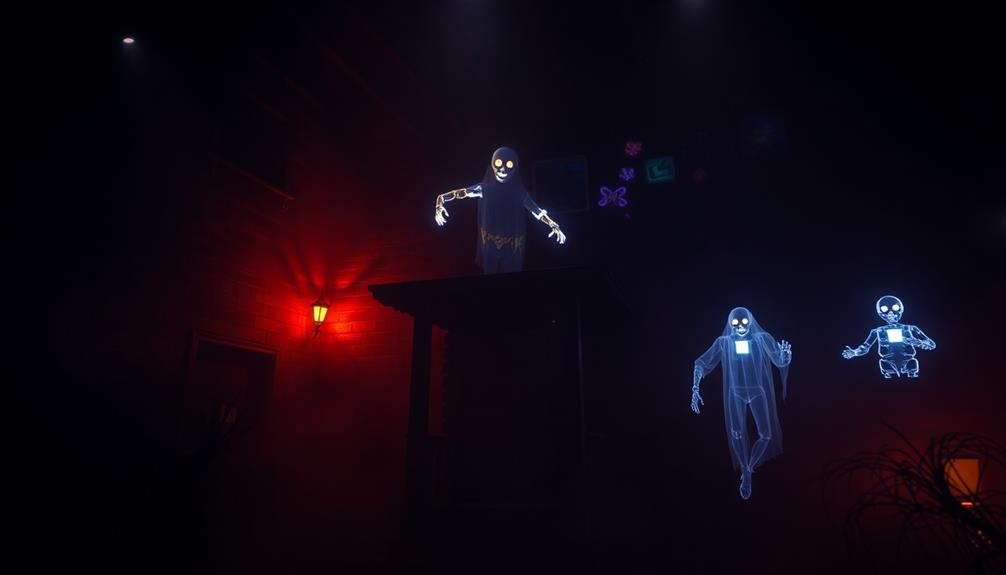You thrive on the adrenaline rush that comes from facing fear head-on during Halloween. The thrill of haunted houses and scary movies activates your fight or flight response, releasing adrenaline and endorphins that create feelings of euphoria and emotional release. Celebrating this night allows you to explore your fears safely, fostering connections with friends as you share laughs and scares. Halloween's roots tap into ancient traditions of confronting death, while your curiosity about the unknown adds excitement. Engaging with fear builds resilience and self-esteem, making Halloween not just spooky, but also a powerful way to connect. There's much more to explore on this topic.
Key Takeaways
- Engaging with fear during Halloween activates the fight-or-flight response, leading to heightened alertness and an adrenaline rush that fosters euphoria.
- Halloween allows for safe exploration of personal fears, facilitating emotional catharsis and stress relief through thrilling activities like haunted houses and horror films.
- Shared experiences of fear create strong social bonds, as collective laughter and conversations about scares deepen connections among friends and family.
- The cultural and historical roots of Halloween invite individuals to confront mortality and the unknown, providing a socially acceptable outlet for exploring existential questions.
- Personality traits, such as sensation-seeking, influence engagement with fear, making Halloween a platform for personal growth, bravery, and a sense of accomplishment.
Physiological Effects of Fear
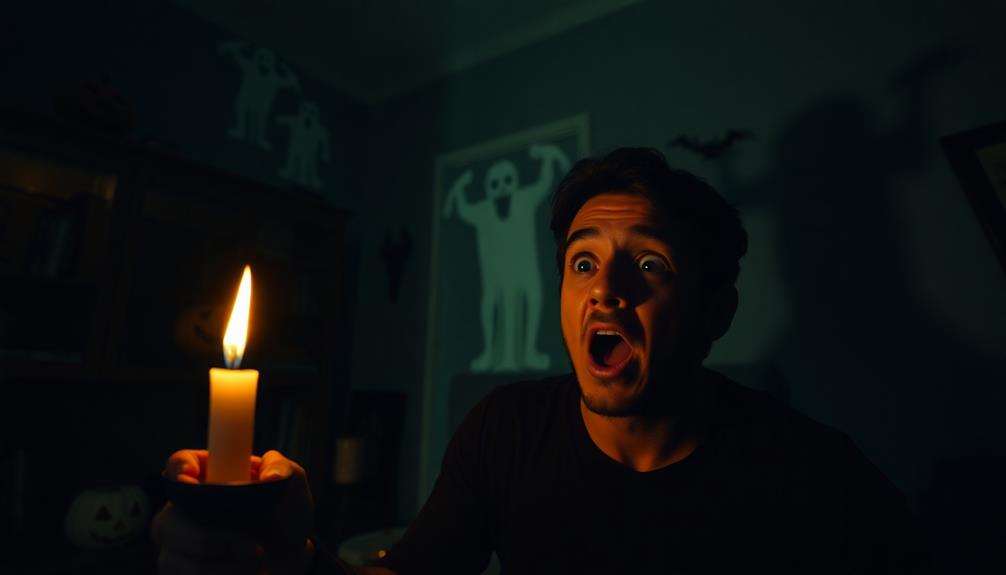
Fear acts like a switch, activating your body's fight or flight response and triggering a cascade of physiological changes. When you face a perceived threat, your amygdala kicks into gear, evaluating the danger and initiating your body's defense mechanisms. This results in the release of adrenaline and stress hormones like cortisol, which ramp up your heart rate and heighten your alertness.
You might notice your heart pounding and your breathing becoming faster—this is your body preparing to either confront or escape the situation. Experiencing fear can be likened to the effects of narcissistic abuse recovery, where understanding your physiological responses is vital for healing.
As your autonomic nervous system activates, you may also experience sweating and other physiological reactions that intensify the sensation of fear. Curiously, this rush of adrenaline can create a paradoxical effect; alongside the fear, your body releases endorphins, which can lead to feelings of euphoria.
It's similar to the thrill of riding a roller coaster, where fear and pleasure coexist. Repeated exposure to fear, such as during Halloween scares, can even enhance your resilience, training your brain to manage its responses more effectively.
Embrace these physiological effects, as they're part of what makes the thrill of fear so enticing.
Emotional Release Through Horror
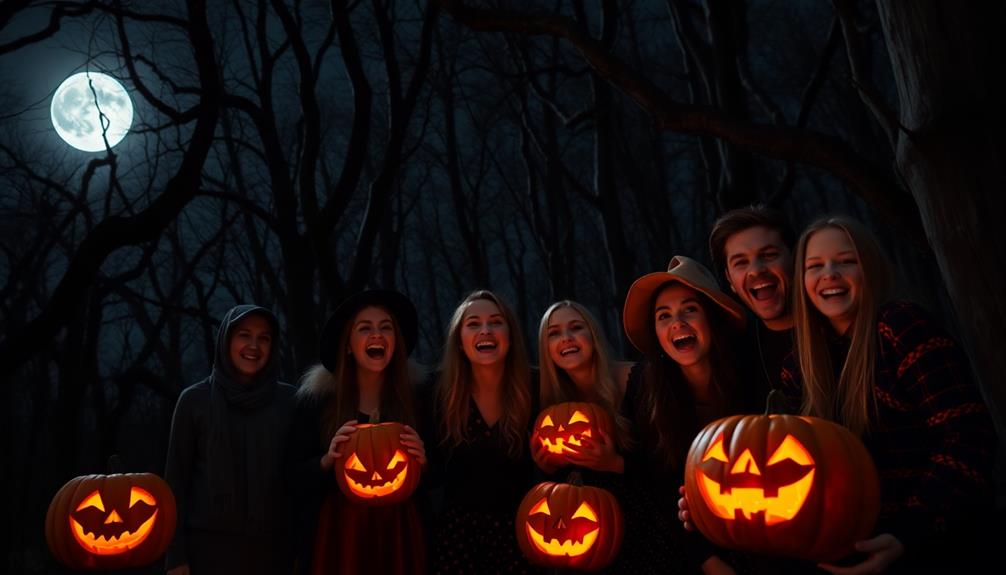
When you engage with horror during Halloween, you tap into a thrilling adrenaline rush that can help release pent-up emotions.
This safe exploration of your personal fears not only offers a temporary escape from daily stress but also encourages a deeper understanding of your own anxieties.
Adrenaline and Emotional Catharsis
Halloween offers a unique opportunity to experience adrenaline and emotional catharsis through horror. When you step into a haunted house or watch a spine-chilling movie, your body responds with an adrenaline rush. This surge of adrenaline and cortisol heightens your alertness, making the thrill of fear exhilarating.
In this safe and controlled environment, you can confront emotions that may be lurking beneath the surface, leading to a satisfying release.
Picture yourself:
- Jumping at sudden screams from the shadows
- Heart racing as you navigate dark hallways
- Laughing nervously with friends after a scare
- Sharing ghost stories around a flickering bonfire
- Relishing the satisfaction of facing your fears
Engaging in these activities allows you to enjoy being scared while also processing everyday stressors and anxieties. The emotional catharsis you experience not only provides relief but also fosters social connections, as you bond with others over shared scares.
Exploring Personal Fears Safely**
The thrill of exploring personal fears can be both exhilarating and enlightening. When you engage with horror during Halloween, you get a chance to confront scary situations in a safe space. This controlled environment allows for emotional release, where you can process your fears without real danger.
| Experience | Emotional Reaction | Outcome |
|---|---|---|
| Watching horror films | Adrenaline rush | Feelings of euphoria |
| Visiting haunted houses | Heightened fear | Sense of accomplishment |
| Scaring your friends | Shared laughs | Strengthened bonds |
Social Bonds in Scary Experiences
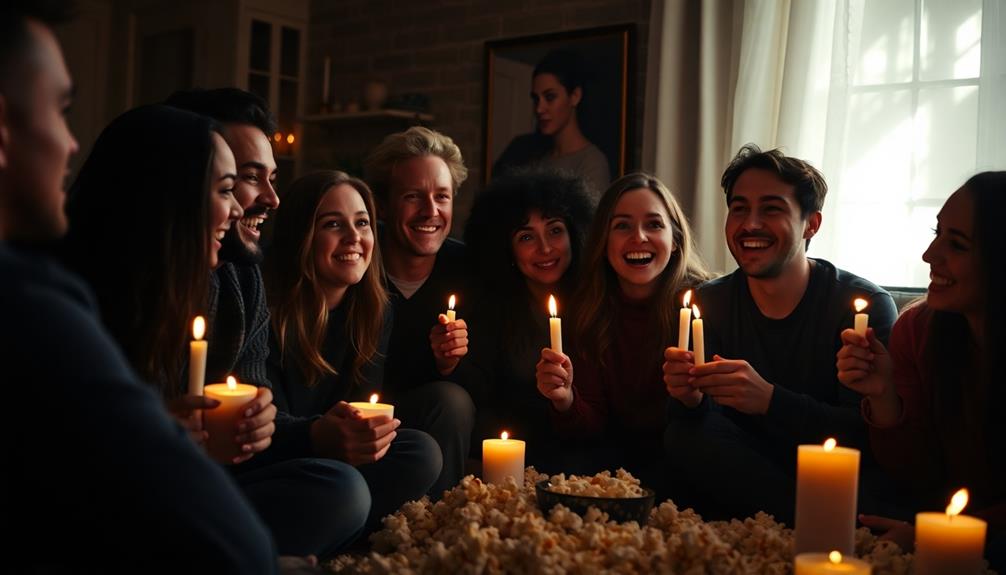
Experiencing fear together can create powerful social bonds. When you navigate haunted houses or watch horror films with friends, those shared experiences foster camaraderie and strengthen social connections. The adrenaline rush you feel during these moments amplifies emotional bonding, as laughter and support often follow the scares.
This phenomenon can be linked to how extended separations can lead to emotional disconnection when individuals don't share these thrilling moments.
- The thrill of a sudden scream echoing through the dark.
- Friends jumping and clinging to each other in fright.
- The warmth of shared laughter after the initial shock.
- Conversations that dive deep into personal fears and anxieties.
- Lasting memories created on spooky nights that linger for years.
Engaging in fear-inducing activities allows groups to forge a sense of identity and belonging. The collective fear response during Halloween festivities, whether at costume parties or trick-or-treating, heightens feelings of togetherness.
These social interactions encourage open communication, leading to deeper understanding within your circle. By confronting fears side by side, you not only share a thrill but also build a network of support that can last well beyond the Halloween season.
Cultural Roots of Halloween Fear
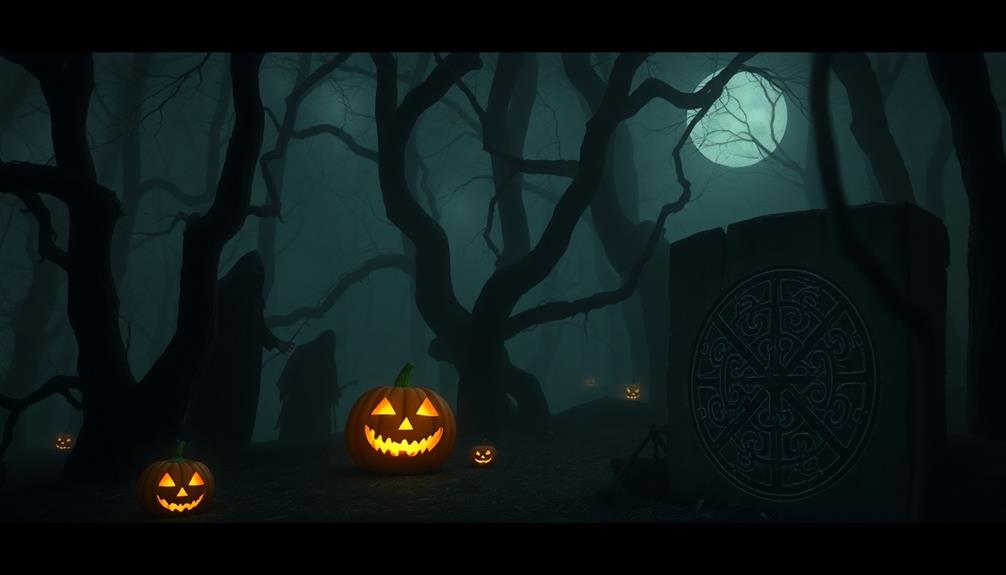
Halloween's roots in ancient Celtic traditions, particularly the festival of Samhain, shaped how we interact with fear today.
You can see how rituals honoring the dead evolved into modern practices that blend fear with festivity.
Ancient Celtic Traditions
Rooted in ancient Celtic traditions, the festival of Samhain marks a significant turning point in the seasonal cycle, blurring the lines between life and death. During this time, Celts believed that the veil separating the living from the dead thinned, allowing for eerie encounters with the supernatural.
You can almost picture the scene:
- Flickering bonfires casting ghostly shadows
- People donning elaborate costumes to disguise themselves from wandering spirits
- Tales of haunted houses whispered around the warmth of the flames
- Rituals honoring deceased ancestors, fostering a connection to those who came before
- The air thick with the anticipation of scary stories and fortune-telling
These practices reflect a deep-rooted fascination with death and fear, which is central to the psychology of fear.
Samhain rituals laid the groundwork for modern Halloween festivities as they embraced both the scary and the celebratory.
As you immerse yourself in today's Halloween, remember that it's not just about the costumes or candy; it's a celebration steeped in ancient beliefs, where the echoes of those Celtic traditions still resonate, inviting you to confront your fears and explore the mysterious.
Modern Interpretations of Fear
Throughout history, people have frequently transformed their fears into creative expressions, and Halloween exemplifies this practice. The ancient festival of Samhain blurred the lines between the living and the dead, fostering a fascination with fear and the supernatural. Today, you can see how this legacy continues through costumes, scary movies, and haunted attractions that explore psychological themes of fear.
| Modern Fear Interpretations | Examples |
|---|---|
| Scary Movies | "Halloween," "The Conjuring" |
| Haunted Attractions | Haunted houses, escape rooms |
| Costumes | Zombies, ghosts, monsters |
These elements not only evoke a sense of excitement but also allow you to confront fears in a controlled environment. Engaging with frightening themes becomes a form of escapism, where you can safely explore your anxieties without facing real danger. This collective acknowledgment of mortality and fear through celebration highlights how Halloween remains a powerful cultural event, bridging ancient rituals with modern interpretations. By embracing these darker themes, you participate in a long-standing tradition that transforms fear into a creative outlet for communities.
Curiosity About the Unknown
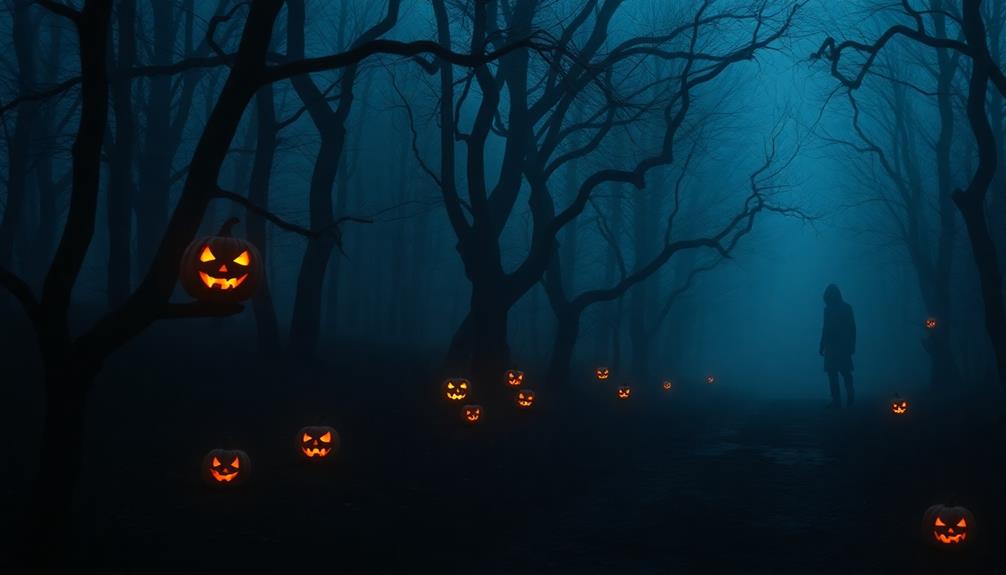
Why do we find ourselves drawn to the eerie and the unexplained during Halloween? It's your curiosity about the unknown that pulls you in, creating a thrilling space for exploration.
Halloween allows you to engage with fear in a socially acceptable way, confronting existential questions that linger in your mind.
Imagine:
- The flickering shadows cast by jack-o'-lanterns on a darkened street.
- The spine-tingling whispers of ghost stories shared around a crackling bonfire.
- The chill of the night air as you wander through a haunted house.
- The thrill of uncovering secrets hidden in old graveyards.
- The unsettling allure of costumes that transform the ordinary into the extraordinary.
This heightened allure of the mysterious during Halloween invites you to probe deeper into taboo themes—like death and the afterlife—while grappling with your own fears.
The psychology behind this fascination is rooted in a fundamental desire for knowledge and understanding. By confronting these dark subjects, you enrich your Halloween experience, processing emotions surrounding mortality and societal anxieties in a playful yet profound way.
Psychological Thrills and Benefits

Engaging with fear during Halloween offers a unique blend of psychological thrills and benefits that can be both exhilarating and transformative. When you step into haunted houses or watch horror films, your brain releases adrenaline, heightening your alertness and creating a euphoric sensation. This rush is similar to the thrill you experience on a roller coaster, making the fear enjoyable rather than overwhelming.
In a controlled environment, confronting fear allows you to experience emotional catharsis and stress relief. Overcoming these scary situations boosts your self-esteem and resilience, providing a sense of accomplishment that can carry over into other aspects of life.
Plus, when you share these fear-inducing moments with friends, it strengthens social bonds. The collective reactions to scares create lasting memories and camaraderie, enhancing the enjoyment of the holiday.
The anticipation of what's around the corner and the unpredictability of Halloween activities stimulate excitement, enriching your overall experience.
Individual Motivations for Fear
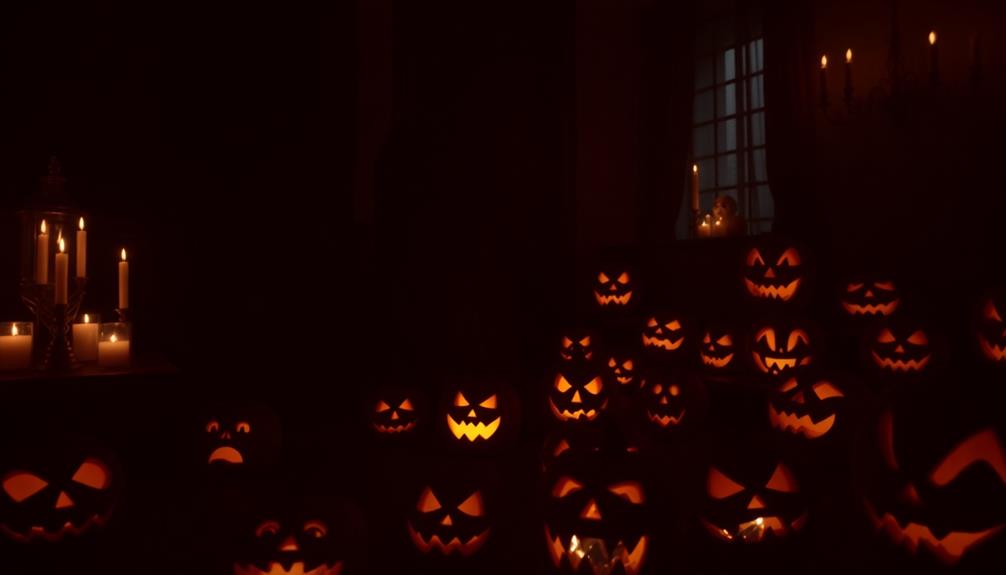
While people have different reasons for seeking out fear during Halloween, many are drawn to the thrill and adrenaline rush that comes with controlled scares. You might find that maneuvering through haunted houses or watching horror movies gives you a sense of accomplishment, as you confront your fears in a safe environment. This can foster bravery and resilience, making the experience even more rewarding.
Consider these vivid examples of fear-inducing activities:
- The eerie silence before a jump scare in a horror film
- The rush of adrenaline as you maneuver a darkened haunted maze
- The thrill of hearing footsteps behind you during a ghost tour
- The heart-pounding excitement of a roller coaster that mimics scary situations
- The communal laughter shared after a terrifying encounter
For many, indulging in these experiences serves as a form of escapism, providing a cathartic release from daily stressors.
Personality traits play a role too; sensation seekers often crave more intense encounters.
Ultimately, Halloween allows you to embrace fear in a way that promotes personal growth and enjoyment.
Frequently Asked Questions
Why Do We Like to Be Scared During Halloween?
You enjoy being scared during Halloween because it heightens your senses and creates excitement. It's a thrilling experience that lets you confront fears in a safe environment, fostering connections with friends and creating lasting memories.
What Is the Psychology Behind Halloween?
When you think of Halloween, it's like stepping into a time machine. The psychology behind it reveals your desire to explore fears, connect with others, and participate in a ritual that celebrates life's mysteries and uncertainties.
Why Is Halloween Supposed to Be Scary?
Halloween's supposed to be scary because it taps into your primal fears. You embrace the thrill of the unknown, enjoying spooky decorations and costumes that transform ordinary settings into eerie experiences, making fear a shared adventure.
Why Is Being Scared so Fun Psychology?
Being scared's like riding a rollercoaster through a haunted house! You get that adrenaline rush, confront fears safely, and bond with others. The thrill and unpredictability make it a fun, exhilarating experience you can't resist!
Conclusion
As the shadows deepen and the chill of October wraps around you like a cozy blanket, remember that embracing fear can be a thrilling dance with your own psyche. You're not just facing monsters; you're unearthing the hidden corners of your mind. Each scream and shiver strengthens your bonds with friends, wrapping you in a tapestry of shared experiences. So, plunge into the delightful terror of Halloween—it's a haunting celebration of courage, curiosity, and the joy of being alive.
